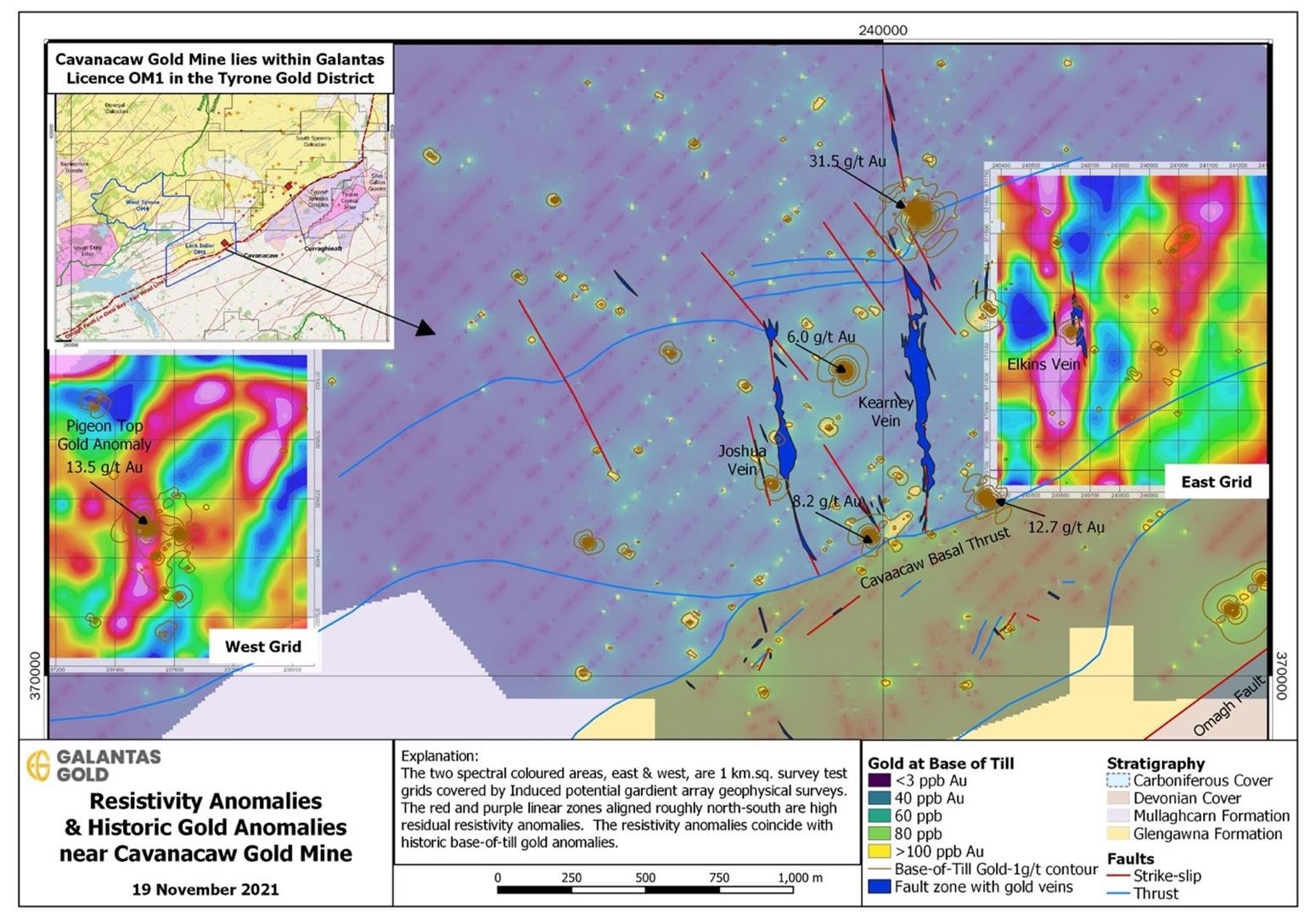Galantas Gold Corporation announces that new geophysical surveys next to the Cavanacaw Gold Mine at the Omagh Project in County Tyrone, Northern Ireland, denote the possible existence of gold-bearing structures.
 Residual resistivity induced polarization anomalies coincide with historical base-of-till gold anomalies near the Cavanacaw Gold Mine. Image Credit: Galantas Gold Corporation.
Residual resistivity induced polarization anomalies coincide with historical base-of-till gold anomalies near the Cavanacaw Gold Mine. Image Credit: Galantas Gold Corporation.
Recently, Galantas performed induced polarization (IP) gradient array surveys next to the Cavanacaw Gold Mine. The intention of the company was to identify the value of the gradient array technique that has not been tried in this area. The two 1-km2 test grids covered targets that were previously determined by other techniques.
The East Grid integrated the Elkins Vein nearly 500 m east of the main Kearney Vein. It was last drilled in 2006–2007 along with shallow downhole intersections grading up to 16.4 g per ton (g/t) gold (Au) over 0.6 m, 11.3 g/t Au over 1.7 m, and 4.1 g/t Au over 3.3 m.
The Elkins Vein has been explored over a strike length measuring 250 m. An apparent resistivity IP anomaly aligned north-south coincides with the earlier known portion of the Elkins Vein. The resistivity anomaly indicates continuity of the Elkins structure to the south. An additional resistivity high, around 300 m to the east, is also found along the historically recorded base-of-till gold.
The West Grid covers a historical gold anomaly cluster at Pigeon Top nearly 1,500 m west of the Joshua Vein. Records of historic Pionjar drilling to base-of-till gold anomalies indicate that the original license holders recovered samples at rock-head with values up to 13.5 g/t gold. High residual resistivity values, oriented north-south over nearly 500 m, tend to coincide with such base-of-till gold anomalies. No diamond drilling has been performed at Pigeon Top till now.
According to Consulting Geophysicist Graham Reid of BRG Ltd., the anomalies most probably represent fault structures present in the bedrock. There is no proof that they are caused by the difference in the overburden.
The local and regional bedrock stratigraphy has been oriented east-north-east at a high angle to the anomalies. On the other hand, the known Cavanacaw vein systems all have a northerly orientation within 20° of each other.
Technical literature on other occurrences denotes that high resistivity can be caused by pore water and powerful wall-rock alteration, both of which are noted underground in the wall rocks of the Joshua and Kearney veins. Thus, it is most likely that high residual resistivity anomalies represent fault zones, which possibly tend to host the gold veins at Cavanacaw.
We are encouraged by these early findings as part of our ongoing exploration efforts. It is the first time ground geophysical surveys were conducted on the property since the 1980s when Rio Tinto explored the area.
Mario Stifano, CEO, Galantas Gold Corporation
“These results, combined with high-grade gold samples at the target areas, provide us with new drilling targets and demonstrate that induced polarization surveys offer an effective exploration tool in this part of the Tyrone Gold District. The results strengthen our belief in the prospectivity of our 549-square-kilometre district-scale exploration licence to build on our high-grade gold resources at Cavanacaw,” added Stifano.